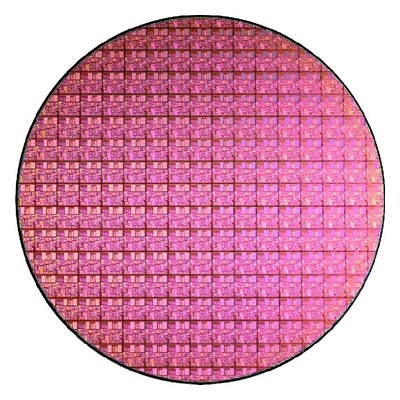Intel Pentium 4-M (Northwood) processors
Introduction: April 2002
Overview
The Pentium 4 brand refered to Intel's line of single-core mainstream desktop and laptop central processing units (CPUs) introduced on November 20, 2000 (August 8, 2008 was the date of last shipments of Pentium 4s). They had the 7th-generation architecture, called NetBurst, which was the company's first all-new design since 1995, when the Intel P6 architecture of the Pentium Pro CPUs had been introduced. NetBurst differed from the preceding Intel P6 - of Pentium III, II, etc. - by featuring a very deep instruction pipeline to achieve very high clock speeds (up to 4GHz) limited only by max. power consumption (TDP) reaching up to 115W in 3.6–3.8GHz Prescotts and Prescotts 2M (a high TDP required an additional cooling that was noisy or expensive). In 2004, the initial 32-bit x86 instruction set of the Pentium 4 microprocessors was extended by the 64-bit x86-64 set.
Pentium 4 CPUs introduced the SSE2 and SSE3 instruction sets to accelerate calculations, transactions, media processing, 3D graphics, and games. They also integrated Hyper-threading (HT), a feature to make one physical CPU work as two logical and virtual CPUs. The Intel's flagship Pentium 4 also came in a low-end version branded Celeron (often referred to as Celeron 4), and a high-end derivative, Xeon, intended for multiprocessor servers and workstations.
The Pentium 4 had an IHS (Integrated Heat Spreader) that prevented the CPU core from accidentally getting damaged when mounting and unmounting cooling solutions. Prior to the IHS, a CPU shim was sometimes used by people worried about damaging the core. Overclockers sometimes removed the IHS on Socket 478 chips to allow for more direct heat transfer. However, on LGA775 chips the IHS was directly welded to the processor core, meaning that the IHS cannot be removed without irreparably damaging the processor.
In 2005, the Pentium 4 was superseded by the Pentium D and Pentium Extreme Edition dual-core CPUs.
The Northwood core
Also based on the Northwood core, the Mobile Intel Pentium 4-M was released on April 23, 2002 and included Intel's SpeedStep and Deeper Sleep technologies, and Hyper-Threading in some models. Intel's naming conventions made it difficult at the time of the processor's release to identify the processor model.There was the Pentium III mobile chip (or PIII-M), the Mobile Pentium 4-M (or the P4-M), the Mobile Pentium 4 (or the Mobile P4), and then just the Pentium M which itself was based on the Pentium III.
Source: Wikipedia, the free encyclopedia.




